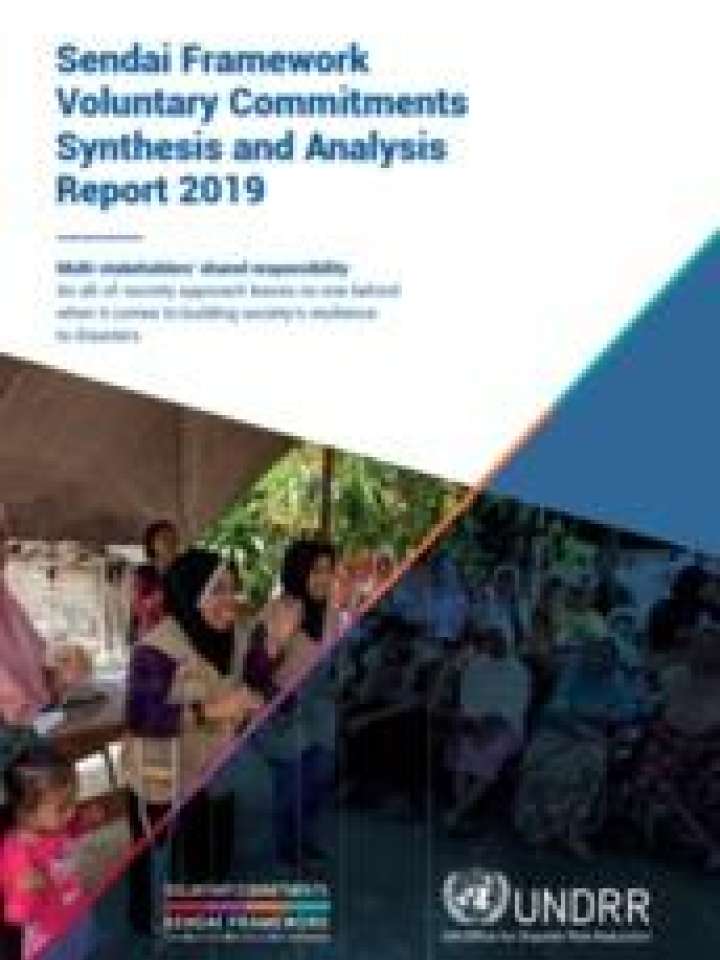Sendai Framework voluntary commitments: Synthesis and analysis report 2019
Reducing vulnerability and enhancing the resilience of communities and nations are necessary conditions for reaching the goals of global agendas on sustainable development, disaster risk reduction, climate change, financing for development and urbanization. In other words, development and economic growth need to be risk-informed to be sustainable because disasters can rollback development gains. These interconnected challenges demand interconnected responses. Whilst states have the primary responsibility, the reality is that the voices of all relevant actors must be heard and their contributions must be recognized.
To achieve this, the United Nations Office for Disaster Risk Reduction (UNDRR) launched the Sendai Framework Voluntary Commitments (SFVC) online platform in December 2018. The SFVC online platform allows stakeholders to: inform, letting the public know about their work; learn and collaborate, knowing who is doing what and where to explore synergies; and motivate others, allowing good practices to be highlighted. In turn, UNDRR can monitor and take stock of progress and achievements. This report presents a synthesis and analysis of why Voluntary Commitments (VCs) are important, the characteristics of the VCs and the contributions to implementing the Sendai Framework.
Main results suggest that VCs have an average duration of 6.5 years, the scope of their activities is predominantly at the national or local levels (58 percent) and are concentrated mainly in the Asia region. The stakeholders that actively submit VCs are NGOs (56 percent) followed by stakeholders in academia and the private sector. More details about specific contributions to Sendai Framework Priorities for Action, Targets, Indicators, themes, hazards and SDGs are also provided. Based on this information and a particular focus on Target E, the report shares good practices working to: strengthen governance in local governments through evidenced-based and inclusive policy-making; reassess and monitor resilience in a network of municipalities; and incorporate the voices of older people into the design of public policy. Last, the report identifies challenges and next steps.
